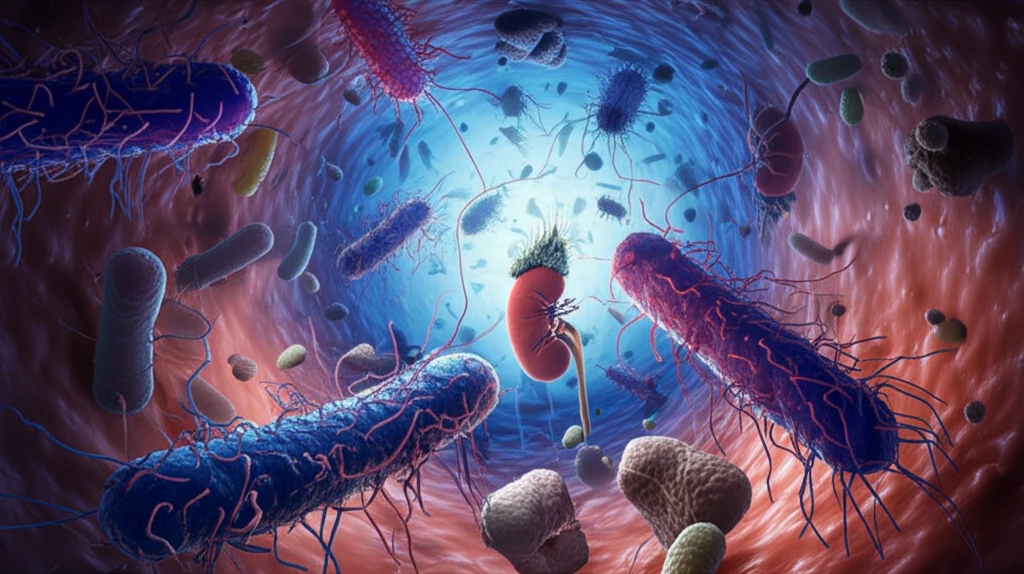
Gut Check: Can Your Gut Bacteria Impact Kidney Stone Risk?
"A new study explores the link between gut microbiota and oxalate stone disease, offering insights into prevention and treatment."
The human gut is a bustling ecosystem, home to trillions of bacteria, archaea, fungi, and other microorganisms collectively known as the gut microbiota. This complex community plays a vital role in various aspects of our health, from digestion and immunity to even mental well-being. Recent research has begun to uncover the intricate connections between the gut microbiota and seemingly unrelated conditions, including kidney stone disease.
Kidney stones are hard deposits made of minerals and salts that form inside the kidneys. While several factors contribute to their development, including genetics, diet, and hydration, a growing body of evidence suggests that the gut microbiota may also play a significant role. Specifically, imbalances in the gut microbiota, known as dysbiosis, can affect the levels of certain substances in the body, such as oxalate, which can increase the risk of kidney stone formation.
A new study published in Scientific Reports delves into the relationship between gut microbiota composition and oxalate stone disease. The researchers investigated the gut microbiota of individuals with recurrent oxalate kidney stones and compared it to that of healthy controls. Their findings reveal intriguing differences in the types and abundance of microorganisms present in the guts of these two groups, shedding light on the potential role of the gut microbiota in kidney stone development.
Dysbiosis and Oxalate Stone Disease: What's the Connection?

The study's key finding is that individuals with recurrent oxalate kidney stones exhibit a distinct pattern of gut dysbiosis compared to healthy individuals. This dysbiosis involves changes in the abundance and diversity of various microorganisms, including bacteria, archaea, and fungi. Specifically, the researchers observed a decrease in beneficial bacteria, such as Oxalobacter formigenes, which helps break down oxalate in the gut, and an increase in potentially harmful bacteria.
- Reduced Oxalobacter formigenes: This bacterium is a key player in oxalate metabolism. Its presence helps to reduce the amount of oxalate absorbed into the bloodstream, lowering the risk of kidney stone formation.
- Increased Dysgenic Taxa: The augmentation of trans-domain species diversity has been found to be higher with dysgenic taxa.
- Decreased Butyrate-Producing Bacteria: Butyrate is a short-chain fatty acid that promotes gut health and reduces inflammation. A decrease in butyrate-producing bacteria may contribute to gut dysbiosis and increase the risk of kidney stone formation.
The Future of Kidney Stone Prevention: Targeting the Gut Microbiota
These findings highlight the potential for targeting the gut microbiota as a novel strategy for preventing and treating oxalate kidney stones. While more research is needed to fully understand the complex interactions between the gut microbiota and kidney stone formation, several interventions may hold promise, including probiotics, prebiotics, and dietary modifications. By promoting a healthy gut microbiota, we may be able to reduce oxalate absorption, improve gut health, and ultimately lower the risk of kidney stone disease. It is essential to consult with healthcare provider before making significant changes to your diet or starting any new supplements.
